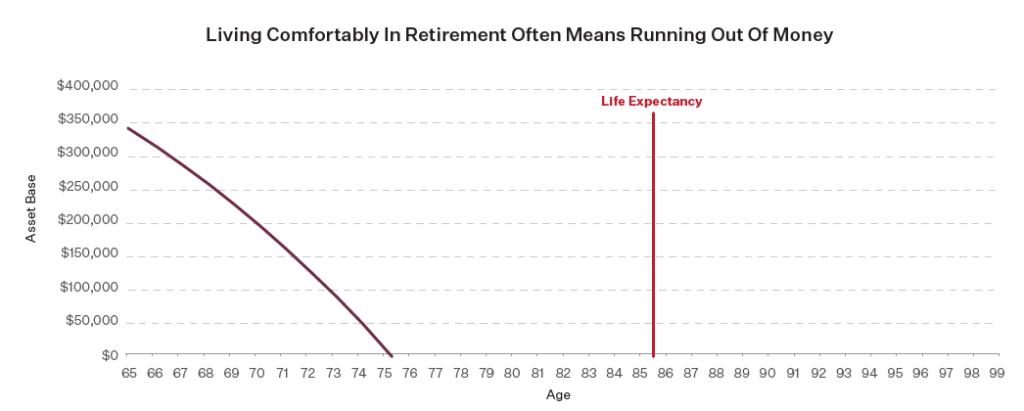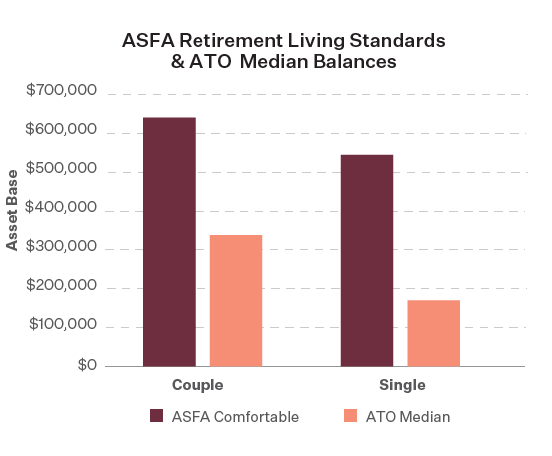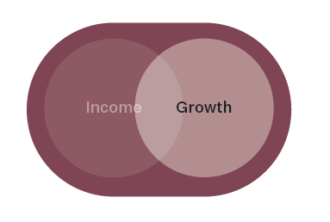Congratulations to all the winners and nominees for this year’s Fund Manager of the Year Awards. For Lonsec and Money Management, these awards are a celebration of the very best of the funds management industry and we will recognise the very best innovations and products and services that improve the investment outcomes of Australians.
As research partner for the awards, we applied the same rigorous approach we take to researching and rating funds to evaluating the nominees and choosing winners in each of the 18 group award categories. It has been an honour to partner with Money Management for these awards and congratulations again to Franklin Templeton for being named Fund Manager of the Year.
Australian Property Securities Fund of the Year
The nominees for the Australian Property Securities Fund of the Year highlight the variety in the sector by showcasing both A-REIT and ‘real asset’ mandates and differing investment styles. Nominated funds have all been well-rated by Lonsec over an extended period and have been able to deliver consistent risk-adjusted performance over the medium-term. The nominees are:
- Cromwell Phoenix Property Securities Fund

- Martin Currie Real Income Fund – Class A
- SGH Property Income Fund
Global Property Securities Fund of the Year
The nominees for the Global Property Securities Fund of the Year represent both Australian and off-shore investment firms. These funds, which have been well rated by Lonsec, have navigated a turbulent period for REIT markets well, allowing them to deliver a consistent level of risk-adjusted performance over the medium-term.
- Ironbark Global Property Securities Fund
- Quay Global Real Estate Fund – Unhedged

- UBS CBRE Global Property Securities Fund
Infrastructure Fund of the Year
The nominees for the Infrastructure Fund of the Year are representative of the dynamism in the listed infrastructure space, both by investment style but also the underlying investment structures. The funds have all been well rated by Lonsec over time, with the managers delivering to investors the listed infrastructure premia during a volatile period in markets and meeting their investment objectives.
- ClearBridge RARE Infrastructure Value Fund — Unhedged

- CFS FC Global Infrastructure Securities Fund
- Lazard Global Listed Infrastructure Fund
Unlisted Real Estate Fund of the Year
The nominees for the Unlisted Real Estate Fund of the Year are part of Lonsec’s universe of direct property funds that provide investors with access to a range of commercial and social property sectors. All nominated managers have built strong property capabilities and have demonstrated a commitment to sound capital management over time.
- Australian Unity Healthcare Property Trust – Wholesale Units
- Centuria Diversified Property Fund
- Charter Hall Direct Industrial Fund No.4

Australian Large Cap Equity Fund of the Year
The nominees for the Australian Large Cap Equity Fund of the Year recognise those funds that have been well-rated by Lonsec over an extended period, and those managers that have been able to deliver consistent risk-adjusted performance in line with performance objectives over the medium-term.
- Allan Gray Australia Equity Fund
- Dimensional Australian Value Trust
- DNR Capital Australian Equities High Conviction Portfolio

- Lazard Select Australian Equity Fund (W Class)
- Quest Australian Equities Concentrated Portfolio SMA
Australian Small Cap Equity Fund of the Year
The nominees for the Australian Small Cap Equity Fund of the Year recognise those funds that have successfully delivered on investment objectives, demonstrated superior stock selection and have been well-rated by Lonsec over an extended period.
- First Sentier Wholesale Australian Small Companies Fund

- OC Dynamic Equity Fund
- Spheria Australian Smaller Companies Fund
Global Equity Fund of the Year
The nominees for Global Equity Fund of the Year have demonstrated ability to consistently meet their investment objectives, have a track record in applying their investment research and portfolio construction processes, as well as being rated ‘Recommended’ or higher by Lonsec.
- Arrowstreet Global Equity Fund

- Barrow Hanley Global Share Fund
- Lazard Global Equity Franchise Fund
- PM Capital Global Companies Fund
- Realindex Global Share Value – Class A
Global Emerging Market Equity Fund of the Year
The nominees for Global Emerging Market Equity Fund of the Year have been sourced from Lonsec’s universe of Global Emerging Markets sector, including funds within the Regional Asia and India sub-sector. The award recognises funds that have been highly rated by Lonsec over the past three years, demonstrated asset allocation and security selection skills, and consistently delivered on its investment objectives.
- Fidelity Asia Fund

- FSSA Asian Growth Fund
- Lazard Emerging Markets Equity Fund
Multi-Asset Fund of the Year
The nominees for the Multi-Asset Fund of the year recognise those products that have been well rated by Lonsec over an extended period of time, and those Managers that have been able to consistently apply their investment process, meet investment objectives through the cycle, and demonstrate portfolio management skill in asset allocation and security selection
- Australian Retirement Trust – Super Savings – Growth
- BlackRock Tactical Growth Fund – Class D
- CareSuper – Sustainable Balanced
- ipac Income Generator (Class K)
- Perpetual Balanced Growth Fund

Passive – Equity Fund of the Year
The Passive Equity Fund of Year award recognises an equity based strategy that has demonstrated a strong track record of success with respect to its underlying index, a superior liquidity profile plus costs that are at least in-line with peers.
- Betashares Australia 200 ETF

- iShares Core S&P/ASX 200 ETF
- SPDR S&P World ex Australia Carbon Control Fund
- VanEck Australian Equal Weight ETF
- Vanguard US Total Market Shares Index ETF
Passive – Other Asset Class Fund of the Year
The Passive Other-Asset class Fund of Year award considers all the passive fixed income, commodities, or alternative strategies within the Lonsec universe. It recognises the Fund with a strong track record of success with respect to its underlying index, a superior liquidity profile plus costs that are at least in-line with peers.
- Betashares Australian Bank Senior Floating Rate Bond ETF
- Global X Physical Gold ETF
- iShares Core Composite Bond ETF

- iShares Global Bond Index Fund
- VanEck Australian Floating Rate ETF
Australian Fixed Income
The nominees for the Australian fixed income category are well rated by Lonsec over an extended period of time. The award recognises managers who have the ability to deliver consistent returns while providing downside protection during challenging markets which are a testament to their robust research and risk management processes, skills and expertise.
- Janus Henderson Australian Fixed Interest Fund
- Macquarie Australian Fixed Interest Fund

- Pendal Sustainable Australian Fixed Interest Fund
- Perpetual Active Fixed Interest Fund (Class A Units)
- Western Asset Australian Bond Fund – Class A
- Yarra Enhanced Income Fund
Global Fixed Income of the Year
As with the previous Australian Fixed Income award, the nominees for the Global fixed income category are well-rated by Lonsec over an extended period of time. The award recognises managers who have the ability to deliver consistent returns while providing downside protection during challenging markets which is a testament to their robust research and risk management processes, skills, and expertise.
- Bentham Global Income Fund

- Brandywine Global Opportunistic Fixed Income Fund – Class A
- Perpetual Dynamic Fixed Income Fund
- PIMCO Income Fund – Wholesale Class
- T. Rowe Price Dynamic Global Bond Fund – I Class
Alternatives Fund of the Year
The nominees for the Alternatives fund of the year recognise those products that have demonstrated a track record of success, offer several competitive advantages against their closest peers and have been rated highly by Lonsec for at least three review cycles. Further, over the long term, each of these Funds has met or exceeded their respective investment objectives, achieved favourable absolute returns in a risk-adjusted manner while providing diversification to investors’ broader portfolios
- Australian Retirement Trust – Super Savings – Diversified Alternatives
- CC Sage Capital Absolute Return Fund
- Hamilton Lane Global Private Assets Fund (AUD)

Responsible Investment Fund of the Year
The nominees for the Responsible Investment Fund of the year recognise those products that have demonstrated a clear integration of ESG into their investment process and deliver a portfolio with a high alignment with the Sustainable Development Goals as well as having at least a recommended rating from Lonsec.
- Ausbil Active Sustainable Equity Fund

- Australian Ethical Emerging Companies Fund (Wholesale)
- Candriam Sustainable Global Equity Fund
- Impax Sustainable Leaders Fund
Innovation Award of the Year
The Innovation Award recognises a manager that has brought a differentiated product to the Australian market. Differentiation can take the form of fee leadership, product structural evolution or additive capabilites to standard asset class products.
- Betashares Capital
- Generation Life
- L1 Capital

Emerging Manager of the Year
The nominees for Emerging Manager of the Year have been selected by Lonsec’s team of Sector Managers. To be eligible for this award, nominees must have a track record of five years or less within the Australian intermediated market, and have at least one product that Lonsec has assigned a ‘Recommended’ or higher rating.
- Aikya Investment Management
- Fortlake Asset Management
- Pzena Investment Management

- Ruffer LLP
- Skerryvore Asset Management
Fund Manager of the Year
To be eligible for the Fund Manager of the Year Award, Managers must have demonstrated a sound investment culture and good governance over an investment cycle and across a number of asset classes.
- BlackRock Investment Management (Australia)
- Franklin Templeton Australia

- Lazard Asset Management
- Macquarie Asset Management
- VanEck
Disclaimer: Lonsec Research Pty Ltd (ABN 11 151 658 561 AFSL 421445) (Lonsec) are acting as a research partner for the Fund Manager of the Year Awards (Awards) issued by Momentum Media Group Pty Ltd on 22 June 2023 The Awards are determined using Lonsec proprietary methodologies, are solely statements of opinion, subjective in nature and must not be used as the sole basis for investment decisions. The Awards do not represent recommendations to purchase, hold or sell any products or make any other investment decisions. Investors must seek independent financial advice before making any investment decision and must consider the appropriateness of the information, having regard to their objectives, financial situation, and needs. Past performance is not an indication of future performance. Awards are current for 12 months from the date awarded and are subject to change at any time. Lonsec does not represent these Awards to be guarantees nor should they be viewed as an assessment of a fund or the funds’ underlying securities’ creditworthiness. Lonsec receives a fee from the financial product issuer(s) for researching the financial product(s), using objective criteria. Lonsec rating(s) outcome is not linked to the fee or the Award. Lonsec and its associates do not receive any other compensation or material benefits from product issuers or third parties in connection with the Award. Lonsec makes no representation, warranty or undertaking in relation to the accuracy or completeness of the Awards. Lonsec assumes no obligation to update the Awards after publication. The Award is for the exclusive use of the client for whom it is presented and should not be used or relied upon by any other person unless with express permission from Lonsec. Except for any liability which cannot be excluded, Lonsec, its directors, officers, employees and agents disclaim all liability for any error or inaccuracy in, misstatement or omission from, this document and any Award or any loss or damage suffered by the reader or any other person as a consequence of relying upon it. ©Lonsec 2023. All rights reserved.















